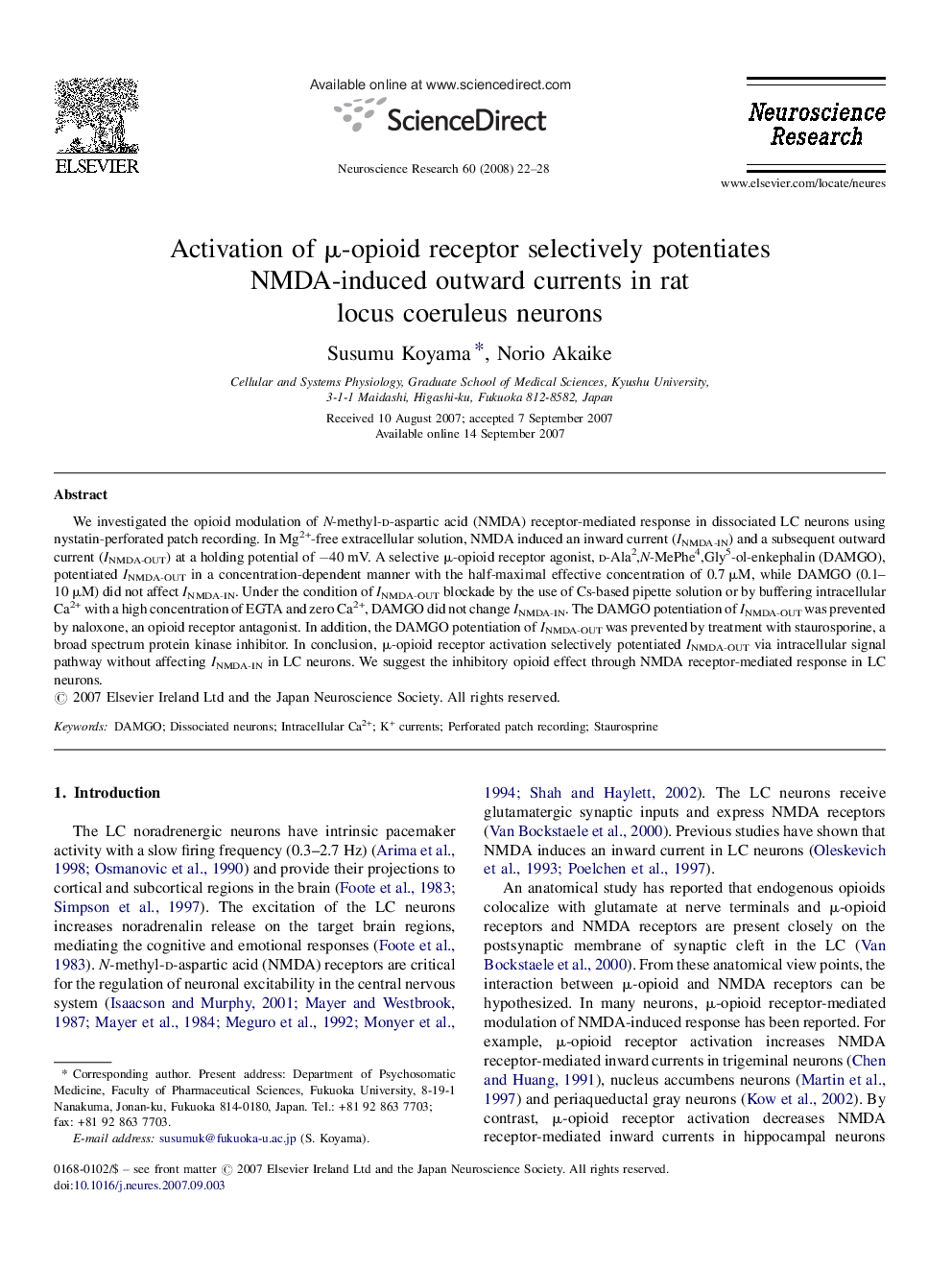| Article ID | Journal | Published Year | Pages | File Type |
|---|---|---|---|---|
| 4352438 | Neuroscience Research | 2008 | 7 Pages |
Abstract
We investigated the opioid modulation of N-methyl-d-aspartic acid (NMDA) receptor-mediated response in dissociated LC neurons using nystatin-perforated patch recording. In Mg2+-free extracellular solution, NMDA induced an inward current (INMDA-IN) and a subsequent outward current (INMDA-OUT) at a holding potential of â40 mV. A selective μ-opioid receptor agonist, d-Ala2,N-MePhe4,Gly5-ol-enkephalin (DAMGO), potentiated INMDA-OUT in a concentration-dependent manner with the half-maximal effective concentration of 0.7 μM, while DAMGO (0.1-10 μM) did not affect INMDA-IN. Under the condition of INMDA-OUT blockade by the use of Cs-based pipette solution or by buffering intracellular Ca2+ with a high concentration of EGTA and zero Ca2+, DAMGO did not change INMDA-IN. The DAMGO potentiation of INMDA-OUT was prevented by naloxone, an opioid receptor antagonist. In addition, the DAMGO potentiation of INMDA-OUT was prevented by treatment with staurosporine, a broad spectrum protein kinase inhibitor. In conclusion, μ-opioid receptor activation selectively potentiated INMDA-OUT via intracellular signal pathway without affecting INMDA-IN in LC neurons. We suggest the inhibitory opioid effect through NMDA receptor-mediated response in LC neurons.
Related Topics
Life Sciences
Neuroscience
Neuroscience (General)
Authors
Susumu Koyama, Norio Akaike,
